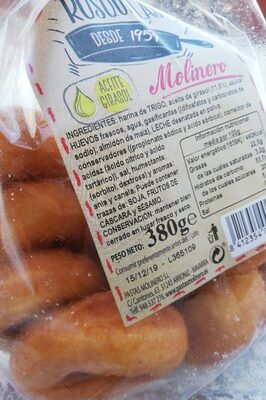Rosquillas - Molinero - 380 g
This product page is not complete. You can help to complete it by editing it and adding more data from the photos we have, or by taking more photos using the app for Android or iPhone/iPad. Thank you!
×
Barra-kodea: 8412354001329 (EAN / EAN-13)
Kopurua: 380 g
Markak: Molinero
Kategoriak: en:Snacks, en:Sweet snacks, en:Biscuits and cakes, en:Pastries
Etiketak, ziurtagiriak, sariak:
en:Green Dot, en:With Sunflower oil
Link to the product page on the official site of the producer: http://pastasmolinero.es/
Dendak: Ahorramás
Saltzen diren herrialdeak: Espainia
Matching with your preferences
Ingurumena
Ontziratzea
Transportation
Report a problem
Datuen iturria
Product added on by openfoodfacts-contributors
Last edit of product page on by naruyoko.
Produktuaren orria -gatik editatua alexrios, kiliweb, roboto-app, yuka.U0x3U1M1b2xpNlFycXNGdjJpblkxdEJMN0p1RFpITHZDTlFlSVE9PQ, yuka.ZjZrSkc2RXVwZjhwbWZJc3pDaUs0SU42MTZDVEFubXFLUFZKSVE9PQ, yuka.sY2b0xO6T85zoF3NwEKvlm9bUoT3vhznKAflo2et_YihIaXxeNRxyLTePKs.








